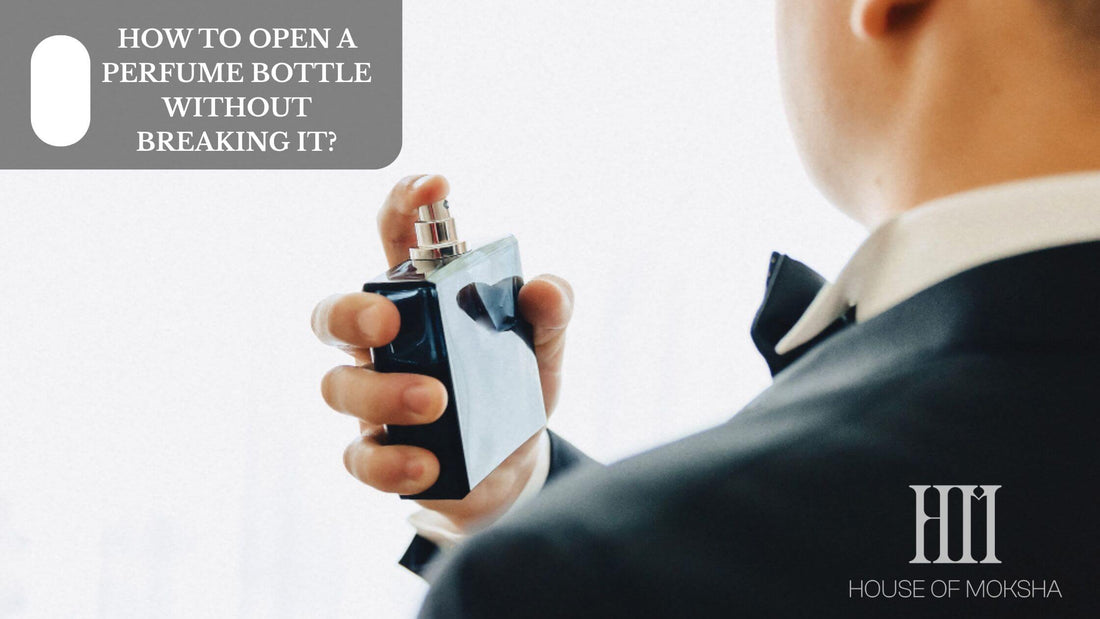
How To Open A Perfume Bottle Without Breaking It?
Share

Understanding Perfume Bottle Designs
The fascinating history of perfume bottles parallels the advancement of art, technology, and culture. The simplest perfume holders from the distant past were containers, artistically crafted from natural materials such as shells, stones, and clay. They were used solely for preserving precious, fragrant oils and not for losing their lingering scent. With the advancement of civilization, the technique for tailoring perfume holders also improved.
The Ancient Egyptians crafted and lost their alabaster and glass sculpted perfume holders, teeming with elaborate rosettes and mythical engravings alongside their precious scent. The sculptors poured their essences into their creations and, thus, magnificent perfume holders emerged that bubbled forth legends from epochs long past.
YOU MAY ALSO LIKE:
Jewel-clad porcelain and polished with unimaginable elegance, crystal holders danced alongside their owners, basking in the envious stares of flatterers. With the progression into the Baroque period, perfume holders no longer held just scents. The elite liberated their delicacies and wove monolithic tales without uttering a word as bewitching and glistening empires showered upon the globe.
With the ascent of the Industrial Revolution, perfume holders became matters of practicality for the high class while keeping the essence, a sweet nectar that civilization crafted, nurtured, and carried to the present in its talons. The craft for perfume holders without losing the scent and the monolithic empires sculpted became matters less of art and more of innovation, elegance, and perfume that terrorized the senses.
The 20th and 21st centuries endeavored to embrace the meth and the mod with the essence and the scent without losing their essences. Craftsmen perfect the balance between stunning design and optimal usability while ensuring bottles are eco-friendly. From simplistic line work to extravagant art, perfume bottles embody the story of the scent and the wearer's personality.
Common Materials Used in Perfume Bottles
A major determinant of the aesthetics and functionality of perfume bottles is the type of material used to make them. The frequently used ones are glass, plastic, and metal.
Glass is the most frequently used material when designing perfume bottles. This is because glass is non-reactive; thus, it is perfect for keeping the integrity of the fragrance unaltered. The large variety of shapes, colors, and finishes that glass offers, such as clear, frosted, tinted, and textured, helps to spice up the design process. The glamorous touch that high-quality glass bottles add to the perfume experience is indescribable.
Plastic is often used for travel-friendly perfume bottles. The lighter and more flexible nature of plastic, as glass is fragile, makes it the best alternative. However, this type of material is less attractive and does a poorer job of preserving fragrance than glass. More sophisticated designs and improved barrier properties of certain product lines are practical with certain advances in plastic technology.
Aluminum and some stainless steels improve the aesthetic of a bottle, while also adding a level of support to the more delicate glass parts of the bottle. In addition to providing a premium feel, the metals help to enhance the bottle’s structural stability, adding a level of durability. Metal parts, like caps, collars, and sprayers, are also used as functional components and decorative elements in perfume bottles.
How Perfume Bottle Design Affects the Fragrance Experience?
The design of perfume bottles is equally artful as it is fundamental to the complete fragrance experience, extending well beyond just the looks. A well-made bottle draws attention, but it also creates atmosphere and anticipation long before the fragrance touches the skin. The shape, as well as the material and color of the bottle, may stir feelings and give hints about the inner personality of the fragrance.
Is it elegant, bold, playful, or even profound and mysterious? All of these and more such characters can be expressed. The design ergonomics also plays an important role. A well-designed bottle permits the user to spray and dispense the fragrance with no wastage and no spilling, which is what many bottles today offer.
For example, well-balanced weights and slender necks enable more comfortable handling and spraying of perfume, an appreciation that enhances the everyday ritual of applying one's go-to fragrance. Also, modern spray nozzles, caps with reliable locking, and even refillable designs do not take away from the durability and even the silky fragrance scent of the perfume. A refillable bottle also conserves the silk scent by preventing air exposure and evaporation, which increases the longevity of the perfume.
Tips for Safely Opening Different Types of Perfume Bottles
Spray Bottle: Most contemporary perfumes arrive in spray bottles with a removable cap. Open the cap straight up without turning, as rotating could occasionally harm the nozzle. To avoid unintentional spills, be careful not to press the spray too hard right after opening.
Rollerball bottles: These perfumes have a tiny ball applicator that rolls the scent onto the skin. Open by just twisting the cap counterclockwise. To prevent spilling the liquid inside, be careful not to press too hard.
Stopper Bottles: Glass or ornamental stoppers may be found on vintage or expensive fragrance bottles. To expose these, hold the bottle firmly with one hand and softly twist and raise the stopper with the other. Too much pressure or strong twisting might shatter or chip the glass, so avoid them.
Screwtop Bottles: Some scents are available in screwtop-capped bottles. Open these by twisting the cap counterclockwise. Make sure your hands are dry to keep from slipping, and don't tighten the cap too much when you close the bottle to keep the seal in good shape.
Atomiser Bottles: Many atomizers have a bulb that needs to be squeezed to spray the fragrance. Remove the protective cap gently to open, then squeeze the bulb lightly to let the mist escape. To stop splashes, avoid pressing too firmly.
Mistakes to Avoid When Opening Perfume Bottles

Pouring a perfume bottle may look straightforward, but it is not technically as straightforward as it may seem because there are frequent problems when opening the bottle, which may not only damage the outer layer but also affect the perfume in the bottle. The first and most critical point is that one should not apply too much pressure to remove the cap or the sprayer.
Most bottles are designed with intricate and fragile pieces that are likely to break, resulting in not only profuse spilling but also broken spray mechanisms. Other frequent mistakes that people make are opening a bottle from the side or at an angle, as opposed to purely vertical. This too can make the cap misaligned and the sprayer cap spray unevenly, or misalign completely and get stuck.
Some people apply pressure to the base and the cap oppositely to the direction in which pressure should be applied, as in twisting a cap. Also, opening a perfume bottle in a hot and damp area can affect the scent and change the formula with time, as perfumes are best stored in a cold and dry place.
YOU MAY ALSO LIKE:
House of Moksha is proud of being genuinely Indian from idea to production, unlike many other Indian perfume lines that depend on Chinese or imported fragrance concentrates. Part of the Moksha Group, one of India's top producers of natural essential oils, extracts, and ingredients for perfumery, our legacy is steeped in authenticity, sustainability, and quality. With years of knowledge of natural components, we produce fragrances that are really different and reflective of India's abundant olfactory heritage. Indian-origin ingredients are centrally placed in every scent HOM, deftly mixed with European sophistication and Arabic depth. This strategy produces extremely Indian but internationally inspired scents.
Our ability to create every fragrance from nothing stems from our in-house laboratory and perfumery R&D lab, which is state-of-the-art. From selecting the best natural elements to mixing them with renewable source fragrance solvents and fixatives, we guarantee that all our processes correspond with our standards of ethics, sustainability, and quality. HOM perfumes offer an experience rather than only fragrances. Since every work is made with care, 100% vegan, cruelty-free, and suitable for those looking for luxury with a conscience, it is ideal.
